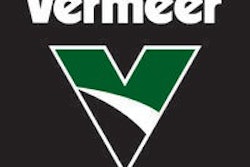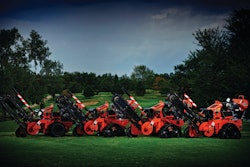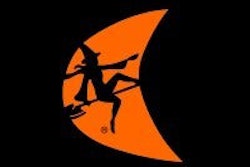
A trencher's job is obviously to dig a trench. How the machine gets that job done can happen in two ways: with a mechanical or a hydrostatic drive. In order to figure out which type of drive system is best for your rental business, you'll have to do a little digging.
Putting power to the ground
A mechanical drive system offers a simple design as well as a slight edge in productivity. The mechanical - or direct - drive system transfers horsepower from the engine directly to the digging chain. On a hydrostatic model, the power goes from the engine to the hydraulic pumps to the control valves then to the wheel and chain drive motors - losing efficiency.
In fact, it's estimated that hydrostatic drives offer roughly 85% of the efficiency of a direct drive. In other words, you'll get more productivity from a 10-hp mechanical trencher than a 10-hp hydrostatic unit.
There are trade-offs, however, for gaining that small bit of efficiency. Trenching by its nature is an aggressive application. Mechanical-drive trenchers have a lot of wear parts - including belts, pulleys and gearboxes - that need maintaining. Hydrostatic trenchers have less routine maintenance, which is always a benefit to rental businesses.
"There is less maintenance on a hydrostatic system - checking the hydraulic oil level daily is much easier then adjusting a drive belt or clutch on a frequent basis on mechanical units," says Jon Kuyers, utility products segment manager with Vermeer Corp.
Friendliness to users
Another major benefit to rental businesses, hydrostatic units are also more user-friendly, say sources. "There are less steps involved in the process of operating a hydrostatic trencher," says Kuyers. "Homeowners and novices can operate the trencher with less instruction than similar types of mechanical machines. However, it's always important to read the operators manual prior to operation."
And hydrostatics can operate in both forward and reverse direction, which is important when the need arises to dislodge a rock or other obstacle. "On a mechanical-drive pedestrian trencher, you can't reverse the chain," says Kevin Smith, product planning manager with Ditch Witch. "If you run into a root or rock with a mechanical unit, you have to disengage the drive mechanism, lift and move the unit, and start over again. With a hydrostatic unit, you simply reverse the chain - it's much easier."
The surge to hydrostatics
The momentum toward hydrostatic trenchers began more than 10 years ago, says Smith with Ditch Witch. "When the first trencher was created in 1949, hydraulic systems weren't prevalant," he explains. "In the 1970s, hydraulics began advancing. Now, as hydraulic system suppliers have increased their capabilities, service line trencher manufacturers have been able to increase their offerings and make hydrostatics more appealing to users. That's why you're seeing a surge in popularity for these trenchers."
Hydrostatics, it seems, have taken over the market. "They're easier to maintain, easier to operate, offer forward and reverse direction and are more reliable," says Tim Phelps, product manager at Barreto. "Mechanical-type trenchers are old technology. The hydraulic trencher has proven itself in the industry."




















